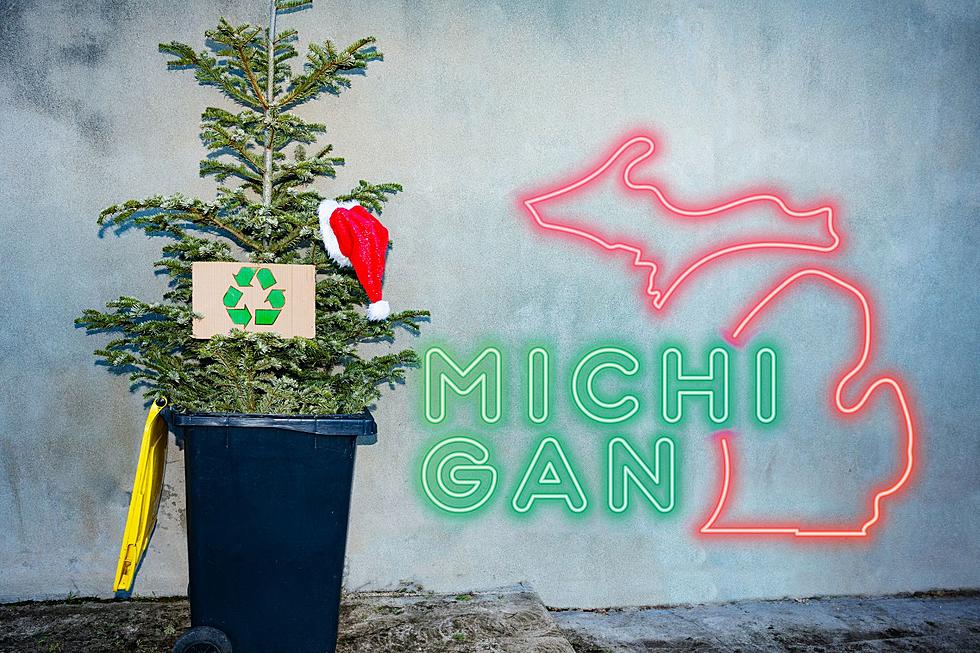
When Santa Comes To Kalamazoo What Do You Call Him?
When Santa finally arrives this year and you have waited up late enough for his arrival, what so you call him?
Growing up, Santa was known in my house as Santa or the "Big Guy", but I never meet him. I could never stay awake long enough to catch a glimpse, but I did always hear the sleigh bells ringing through the night.
Santa a.k.a. the "Big Guy" is known to many around the world, and goes by many different names! Check it out...
Santa Claus and St. Nicklaus (St. Nick)
This is the most common referral to 'the big guy' for most little ones. It was the Dutch who settled in New York many moons ago brought the jolly guy Sinterklaas to America. Once the Dutch told their tale of Sinterklass, many realized that the English character Father Christmas was the same fella, and now we know him as Santa Claus
Saint Nikolaas
According to Wikipedia.org claims that Sinterklaas is based on the historical figure of Saint Nicholas (270–343), a Greek bishop of Myra in present-day Turkey. He is depicted as an elderly, stately and serious man with white hair and a long, full beard. He wears a long red cape or chasuble over a traditional white bishop's alb and sometimes red stola, dons a red mitre and ruby ring, and holds a gold-coloured crosier, a long ceremonial shepherd's staff with a fancy curled top. He traditionally rides a white horse. Sinterklaas carries a big, red book in which is written whether each child has been good or naughty in the past year
Pelznickel
I only learned of Pelznickel from the tTV show the Office, and now thatnks to Oldworldsantas.com I know all the details! This stern German character, also identified as 'Ru Klaas' (Rough Nicholas), 'Belsnickel' and 'Aschenklas' (Nicholas in Ashes), dressed in dark or shaggy clothing or all in furs or skins, was a secular replacement for St. Nicholas in Germany after the Protestant Reformation; a time when honouring saints was supposed to be banned.
The dour character, was introduced to the Middle American colonies by 19th. century German immigrants. Until late in the century, he would visit German households in Baltimore and Pennsylvania on Christmas Eve, carrying a bundle of switches for naughty children and treats for good ones.
Father Christmas
According to Whychristmas.com St. Nicholas was a Bishop who lived in the fourth century in a place called Myra in Asia Minor (now called Turkey). He was a very rich man because his parents died when he was young and left him a lot of money. He was also a very kind man and had a reputation for helping the poor and giving secret gifts to people who needed it. There are several legends about St. Nicholas, although we don't know if any of them are true! The most famous story about St. Nicholas tells how the custom of hanging up stockings to put presents in first started!
Kris Kringle
Learningliftof.com explains that the name “Kris Kringle,” a name popularized by a 1947 movie called Miracle on 34th Street, about a man of that name who plays Macy’s Santa. But the origin of the name goes back much further. In the 1500s, during the Protestant Reformation, Martin Luther wanted to discourage the figure of St. Nicholas (he believed praying to any saint was against Scripture). Luther and his followers introduced the idea that the “Christkind” (German for “Christ-child”) would secretly come on Christmas Eve to bring presents to all good children. Christkind was modified to Kriss Kringle in the 1840s and became a popular nickname in some countries for Santa Claus.
Whatever you call the cool guy that visits you once a year, I hope that he leaves you everything you wish for!
More From WKFR









